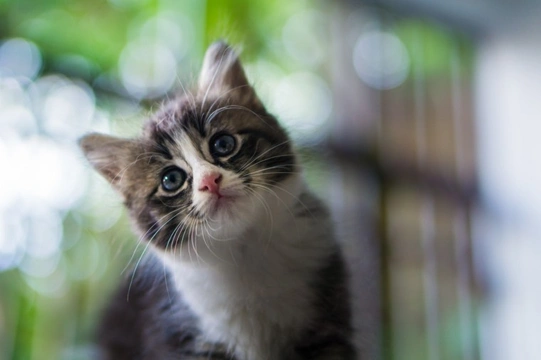
What is the closest relative and historical ancestor of the domestic moggy?
Our beloved pet cats, Felis catus or Felis catus domesticus, are unique from all other members of the cat species in one very specific respect; they are the only cat species in the world that is domestic, or that can be domesticated.
There are a huge number of different feline species in the world, and many more that are now extinct, and yet our own pet cats are the only ones that live side by side with humans willingly. However, domestic cats are of course also closely related to their wild relatives of all different types, and maintain a lot of the same traits as them too.
Additionally, domestic cats are adept hunters and in an evolutionary context, an excellent example of a species that is well evolved and adapted for natural survival, and domestic cats as a species could and would remain extant, survive, and thrive, without humans to feed and care for them!
If you have ever wondered exactly how closely related your pet cat is to their wild ancestors and what cat species is the closest living relative to our own pets, wonder no more. This article will tell you about the closest relative of the domestic cat, and a little more about their shared history and commonalities too. Read on to learn more.
What wild cat species is the domestic cat’s closest relative?
DNA analysis of the domestic cat and comparison with that of all known extant cat species as well as those now extinct, where possible, indicates that the modern moggy has the greatest number of DNA similarities with the species called Felis sylvestris lybica, also known as the African wildcat.
In fact, if you’re quickly Googling to find a picture of the African wildcat as a result of learning this, your immediate impression might be that of a fairly large pale tabby cat!
The African Wildcat is still present in the wild today, and its natural habitat encompasses quite a broad geographical area including the whole of the African continent, the edges of the Arabian Peninsula, the Middle East, and as far east as the edges of the Caspian Sea.
Genetic comparisons of the domestic cat and the African Wildcat in fact indicate that the DNA of these two species are almost identical; no other wild cat species, either extant or extinct, comes close.
Ergo, the African Wildcat is not only the domestic cat’s closest relative, but also, proven to be their direct ancestor and the species that formed the foundation of the totally separate species we now call the domestic cat.
Even other small wildcat breeds like the European Wildcat and the Central Asian Wildcats don’t share as much in common with either the domestic cat or the African Wildcat as the domestic cat and African Wildcat do with each other; and so flipped around, the African Wildcat has more in common with the world’s only domestic cat breed than it does with its wild peers!
How closely related are African wildcats and domestic cats?
Whilst the African Wildcat and domestic cat are only very minutely divergent in terms of their DNA, there is still enough difference between them to ensure that these are not simply two variants of the same umbrella species.
All mammal species in fact have more in common on a genetic level than we do apart, in fact, we humans share a whopping 90% of our genes with cats, which is a statistic that might be fairly said to warrant a quick sit down (and a saucer of milk..?)
However, when it comes to the level of shared DNA between the African wildcat and the domestic cat, much more is shared than is normal across two species that are recognised as separate from each other as opposed to two branches of the same tree.
Aside from the fact that the domestic cat and the African Wildcat look very similar in both size and appearance (and in fact, the dominant coat colour in the domestic cat is tabby, and only selective breeding has caused and maintained the whole rainbow of cat coat colours and styles we see today) there is another vital trait that reinforces the fact that the two species have more in common than apart.
This comes down to their reproductive abilities in terms of crossing the species divide.
Generally, one of the benchmarks of separation between species that otherwise appear very similar is an inability of the two species to reproduce with each other.
How this looks can vary; two separate but similar species might be physically unable to mate, or mating doesn’t result in conception, or may result in conception but spontaneous miscarriage; or alternatively, mating and the production of young can occur, but the subsequent offspring itself is infertile and cannot reproduce.
When it comes to the African wildcat and the domestic cat, however, both species when living in the same geographical region and physically able to mate (ie, not spayed or neutered) can and do mate with each other, and also, produce fertile offspring of their own that could maintain the bloodline in perpetuity.



